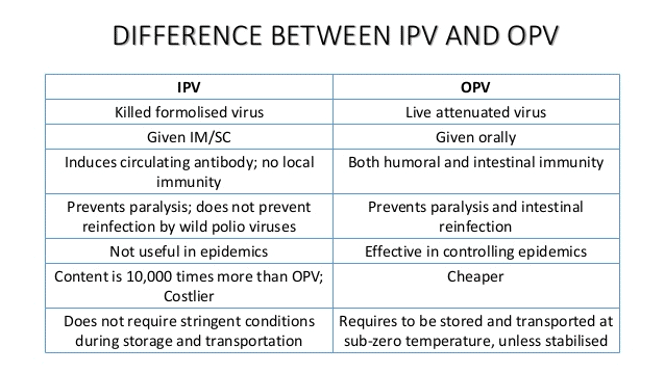The Hindu Editorial Analysis- 23rd August 2024 | Current Affairs & Hindu Analysis: Daily, Weekly & Monthly - UPSC PDF Download

Building on favourable change in the 2024 Waqf Bill
Why in News?
Parliament plans to present the Waqf (Amendment) Bill, 2024, to modify the Waqf Act of 1995. The aim is to improve responsibility and clarity in how Waqf boards operate.
The bill intends to eliminate specific parts of the 1995 Waqf Act to limit the unchecked authority of Waqf Boards. Currently, they have the ability to designate any property as Waqf without necessary oversight.
What are the Key Amendments in Waqf Act (Amendment Bill), 2024?
- Transparency: The Bill suggests about 40 changes to the current Waqf Act. One key change is that Waqf Boards must verify all property claims, ensuring clarity.
- Gender Diversity: Sections 9 and 14 of the Waqf Act from 1995 will be updated to change how the Waqf Board is made up and works, including adding female members.
- Revised Verification Procedures: New ways to verify Waqf properties will be introduced to handle disagreements and prevent misuse. District magistrates might supervise these properties.
- Limited Power: Concerns about Waqf Boards having too much power are being addressed. Unchecked powers have led to many disputes and claims of misuse, such as the Tamil Nadu Waqf Board claiming an entire predominantly Hindu village, Thiruchendurai, in September 2022.
Why Amendment to the Waqf Act, 1995 have been Criticised?
- Reduced Powers: It restricts the authority of Waqf Boards, impacting their ability to oversee Waqf properties.
- Minority Rights Concerns: Some are worried that it could harm the interests of Muslim communities that rely on these properties for religious and charitable purposes.
- Increased Government Control: More involvement from district magistrates and increased oversight might result in excessive bureaucratic interference.
- Hampers Freedom of Religion: Having district magistrates and other officials oversee Waqf properties could be seen as an intrusion on religious independence.
- Potential Disputes: Introducing new verification procedures involving district magistrates could lead to more conflicts and complexities.
What is Waqf Act, 1955?
- Background: The Waqf Act was initially created by Parliament in 1954. It was later replaced by a new Waqf Act in 1995, granting more authority to Waqf Boards. In 2013, the Act was amended to empower the Waqf Board to identify property as 'Waqf Property.'
- Definition of Waqf: Waqf is the permanent dedication of properties, movable or immovable, for religious, pious, or charitable purposes as recognized by Muslim law. It involves giving property to God to benefit the needy, with proceeds typically supporting educational institutions, graveyards, mosques, and shelter homes.
- Regulation in India: Waqfs in India are governed by the Waqf Act of 1995.
- Management: The management of Waqf involves a survey commissioner identifying Waqf properties and a mutawali overseeing them. Unlike trusts under the Indian Trusts Act, Waqfs are specifically for religious and charitable purposes and are meant to be perpetual.
- Creation of Waqf: To establish a Waqf, one must be of sound mind and have valid ownership of the property. The creator (Waqif) does not necessarily have to be Muslim but must believe in Islamic principles.
- Waqf Board: A legal entity capable of managing and transferring property, the Waqf Board oversees Waqf properties and can authorize transactions involving these properties with the approval of at least two-thirds of board members.
- Central Waqf Council (CWC): Established in 1964, the CWC advises state-level Waqf Boards in India.
- Waqf Properties: The Waqf board holds a significant amount of land in India, with numerous registered properties generating substantial revenue. Once a property becomes a Waqf, it is non-transferable and is considered a charitable act toward God.
Conclusion
- The Waqf (Amendment) Bill, 2024 improves how waqf properties in India are managed and made transparent.
- It helps waqf boards ensure benefits reach the right communities by enhancing governance, accountability, and asset utilization.
- This amendment intends to maintain waqf integrity while supporting social welfare and economic growth, which could lead to increased trust and community involvement.
UPSC Civil Services Examination, Previous Year Questions (PYQs)
Mains
Q. How is the Indian concept of secularism different from the western model of secularism? Discuss. (2018)
Intriguing Silence
Why in News?
A two-year-old child in Tikrikilla, Meghalaya has contracted vaccine-triggered polio. This isn't the wild poliovirus but an infection that occurs in some individuals with low immunity. Over 90% of instances of vaccine-triggered poliovirus outbreaks are caused by the type 2 virus found in oral polio vaccines.
What is vaccine-derived polio?
- Vaccine-derived polio is a rare occurrence when the weakened strain of poliovirus in the oral polio vaccine mutates and regains the ability to cause paralysis.
- Polio, also known as poliomyelitis, is a highly contagious viral illness that mainly impacts children below five years old.
- The oral polio vaccine has played a crucial role in managing and eradicating polio in various areas.
- In some instances, the weakened virus in the vaccine can change over time and become capable of causing paralysis again.

Why Does Vaccine-Derived Polio Occur?
- VDPV cases can occur in certain situations:
- Low Immunization Coverage: In places with few vaccinations, the weakened virus from the OPV can spread and change.
- Poor Sanitation: The poliovirus spreads through unclean conditions, like bad sanitation.
- Mechanism: The OPV has a live, weakened virus that triggers an immune response without causing the disease. But in areas with low immunization, the weakened virus can spread and change, possibly becoming strong again.
- Circulating Vaccine-Derived Poliovirus (cVDPV): When the changed virus starts spreading in the community, it is called cVDPV.
- Key Points:
- Response: Health officials in Meghalaya are on high alert. They are focusing on preventive actions like vaccination campaigns to stop the spread.
- Global Context: According to the World Health Organization (WHO), over 10 billion doses of OPV have been given worldwide since 2000, with 24 cVDPV outbreaks in 21 countries.
- Mitigation Strategies
- High Immunization Coverage: Making sure all kids get vaccinated is very important. High coverage helps create 'herd immunity,' lowering the chances of virus spread.
- Switching to Inactivated Polio Vaccine (IPV): Unlike OPV, IPV has a killed virus, removing the risk of VDPV. However, IPV is pricier and less effective for community-wide immunity compared to OPV.
- Enhanced Surveillance: Regular watching and quick response to any poliovirus case are crucial to prevent outbreaks.
KEY FACTS ABOUT POLIO
About | Polio is a viral infectious disease that affects the nervous system, potentially causing irreversible paralysis and even death. |
Causative Agent | Poliovirus, an RNA virus belonging to the Picornaviridae family. |
Wild Poliovirus Strains |
|
Transmission | Primarily through the fecal-oral route; the virus multiplies in the intestine and can invade the nervous system. |
Affected Population | Predominantly children under five years of age. |
Symptoms | Most infections are asymptomatic; symptomatic cases may experience fever, fatigue, headache, vomiting, neck stiffness, and limb pain. In severe cases, it can cause paralysis. |
Vaccines Available | Oral Polio Vaccine (OPV): Administered as a birth dose, followed by three primary doses at 6, 10, and 14 weeks, with a booster at 16-24 months. Injectable Polio Vaccine (IPV): Given as an additional dose with the third DPT vaccine under the Universal Immunization Programme (UIP). |
India’s Polio-Free Status | India was declared polio-free by the World Health Organization (WHO) in 2014, with the last wild poliovirus case reported in 2011. |
Global Polio Eradication | Efforts to eradicate polio began with the launch of the Global Polio Eradication Initiative (GPEI) in 1988. As of now, WPV1 remains endemic in just two countries: Afghanistan and Pakistan. |
Vaccine-Derived Poliovirus | In rare cases, the weakened virus in OPV can mutate and lead to vaccine-derived poliovirus (VDPV), which can spread in under-immunized populations. |
Polio Surveillance | Surveillance of acute flaccid paralysis (AFP) cases is critical for monitoring and detecting poliovirus transmission. |
Recent Challenges | Vaccine hesitancy, conflict areas, and migration continue to pose challenges to polio eradication efforts globally. |
Future Goals | Complete eradication of WPV1 and continued surveillance to prevent re-emergence of polio. |

Conclusion:
- The situation in Meghalaya shows how important it is to keep giving vaccines even after stopping polio.
- Although the polio drops have worked well, we still need to be careful about a different kind of polio that can come from the vaccine.
- To completely get rid of polio in all its types, we need to use both kinds of polio vaccines, make sure places are clean, and keep giving vaccines to lots of people.
|
38 videos|5269 docs|1114 tests
|





















